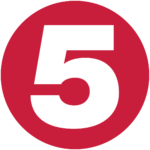What Is Gynecomastia Surgery?
Gynecomastia surgery is a method used to remove chest fat and tissue; this can build up with weight gain, hormonal imbalance, genetics, age and other potential causing factors. Gynecomastia is a common condition and has been observed in 35% and 65% of men between the ages of 50 and 70. It can develop in puberty and follow into adulthood; however, each case is different and treatable.
Overall, gynecomastia treatments here at Gary Ross in Manchester aim to restore confidence, resolve medical conditions and provide a solution to qualifying patients.
Nights In Hospital
Patients are permitted to leave the same day; we ask that they be collected by a member of their family or a friend.
Recovery
Expect recovery to be up to 3 weeks+ to return to normal everyday activities.
Full Results
This depends on the case, 6 weeks or more.
Gary Ross MBChB, MD, FRCS, (Plast)
Gary Ross is an award-winning and extensively accredited plastic surgeon operating in the Manchester area.
As a member of the
- British Association of Aesthetics Plastic Surgeons (BAAPS)
- Association of Breast Surgery (ABS)
- British Association Of Plastic Reconstructive (BAPRAS)
- General Medical Council (GMC)
With associations and history with Christie’s alongside educating at Manchester University, Gary Ross has over 20 years in practical and life-changing reconstructive and breast surgeries, including male breast reductions and gynecomastia surgery here in Manchester.
Consultation For Gynecomastia Surgery in Manchester
We conduct a consultation via video call or in person; this is an open space to discuss your expectations and unique case. We will discuss treatment options, including combinations with liposuction, provide case studies of previous patients, provide details of the surgery and provide real expectations. Mr Ross strives for natural and realistic expectations with every gynecomastia surgery.



Preparing for Gynecomastia Surgery
Gynecomastia Surgical Process
Post-Gynecomastia Surgery
Although all men produce some oestrogen, typically they have higher levels of testosterone, which stops oestrogen, allowing the breast tissue to grow. Oestrogen causes breast tissue to grow, and when there is an imbalance between the two hormones, this can lead to male gynecomastia.
Another common cause of gynecomastia is weight gain. Being overweight can increase levels of oestrogen, and if you are overweight, then you’re also likely to have higher levels of body fat, which can cause breast tissue to enlarge. Puberty is another common cause of gynecomastia in young men, as, during puberty, hormone levels can vary, but in most cases, adolescent “gyno” doesn’t persist.
If the levels of testosterone drop, then oestrogen can cause the breast tissue to grow. Most teenage boys will experience some degree of breast enlargement during puberty, but as hormone levels begin to stabilise, the effects can subside.
While in puberty and adolescence phases, where ‘gyno’ or ‘man boobs’ can develop and go away on their own, it’s not common for adult male gynecomastia to go away naturally without chest
In the majority of cases, the complete removal of the gynecomastic gland is the most effective option for moobs removal. However, depending on the case, you can reduce the appearance with weight loss and strength training.
If you are interested in a male breast reduction, then we will first invite you in for a
We recommend that you avoid strenuous activities and exercise, stretching and heavy lifting for around 3 weeks following gynecomastia surgery, and it can take up to 6 weeks to fully return to your normal activities. We recommend that you avoid driving until it is no longer painful or uncomfortable to wear a seatbelt, which can be several weeks following gynecomastia surgery.
After having male breast reduction (gynaecomastia surgery), most men will have a scar around their nipples, but if you have undergone large gynecomastia reduction surgery, then this may result in vertical or horizontal scars across the breast crease. Before gynecomastia surgery, we will discuss the surgery plan so that you are aware of any potential scarring beforehand. It can take several months, but scars will heal over time.
Gynecomastia surgery is not suitable for patients who are significantly overweight, are frequent smokers, have underlying health conditions, or have unrealistic expectations. Often, gynecomastia can be mistaken for excess fat deposits, which can be the result of obesity. In this case, weight loss may be recommended before opting for surgery to resolve these concerns. It is important to discuss with your healthcare provider the relevant pathways before resorting to gynaecomastia surgery, as you may not be qualified.
Liposuction removes fat cells, and although these cells do not come back, other fat cells can occur in the same area. It is unusual to have irregularities, although over time these can develop. Your body contour will also change, and irregularities can become more apparent with any fluctuations in weight. Although tissue is removed during gynecomastia surgery, the aim is to reduce the volume instead of removing all tissue. The final result of gynecomastia surgery takes a number of months to become apparent.
























